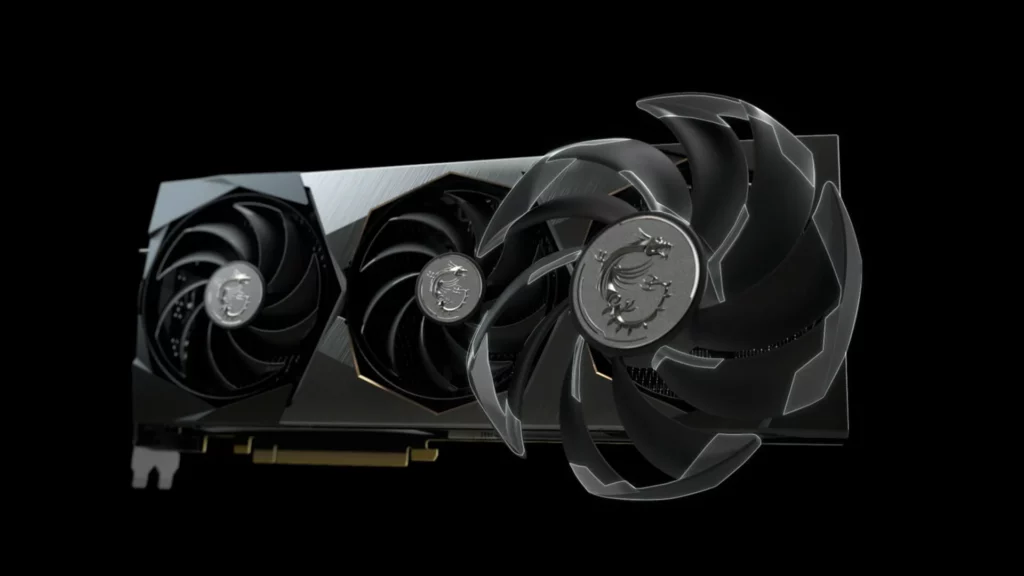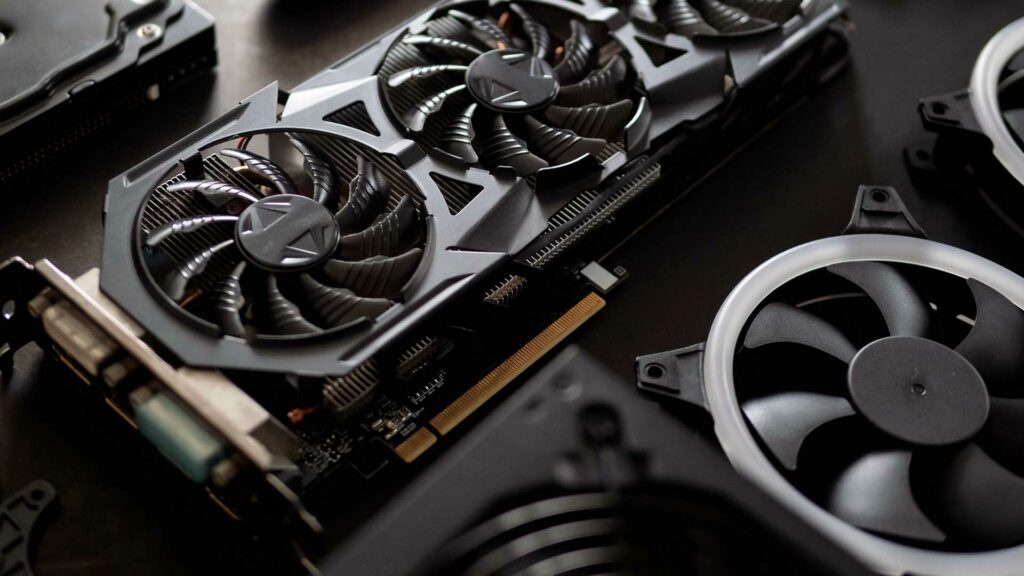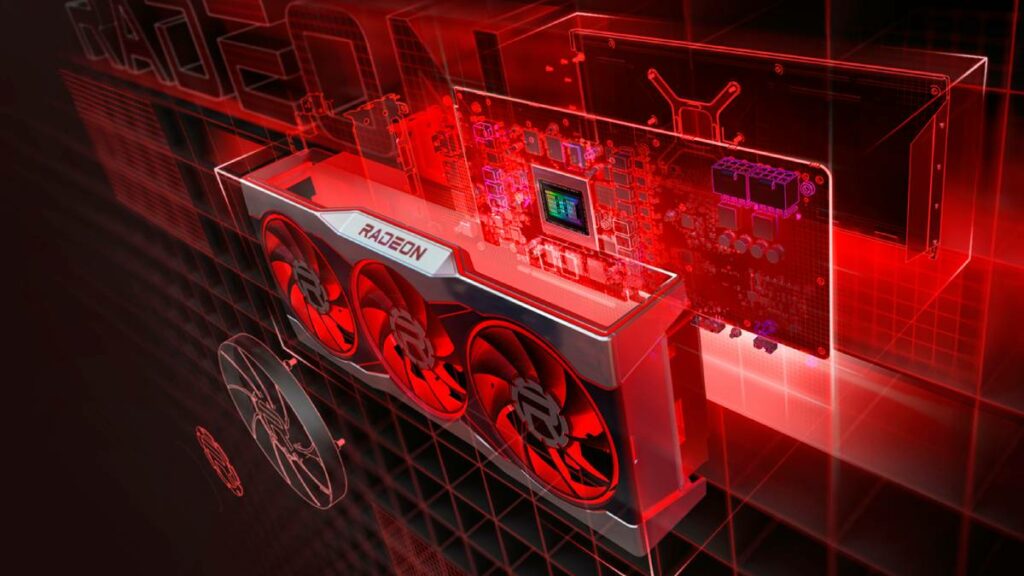Are Gpu Fans Intake Or Exhaust | A Guide to Cooling Strategies
The debate over GPU fans whether they pull in or push out air is a big deal for tech fans and gamers. Understanding this helps maintain peak performance and enhances your gaming experience.
GPU fan intake or exhaust depends on the design of the graphic card to bring cool air into the case. Some GPU fans use a hybrid configuration, intake, and exhaust at the same time.
This article explores the mystery of GPU fans in gaming rigs. Even among tech enthusiasts, whether they pull in or push out air is a common question.
Different Types Of GPU Fan Configuration:

Let’s look inside your GPU to get what those fans are up to. You’ll find a heatsink, some fans, and the crucial GPU chip inside. Their job? To handle the heat that builds up during intense gaming or demanding graphics work.
1. Intake Type Configuration: Fans Bringing In The Cool Breeze:
Regarding the cooling system of a graphics processing unit (GPU), one key aspect is the placement and orientation of the fans. Many GPUs come equipped with multiple fans, but the question arises: are these fans intake or exhaust?
The answer lies in understanding computer cases’ basic principle behind airflow management. In an intake-type configuration, where fresh air is drawn into the case and directed towards the GPU, the fans on the GPU itself would act as exhaust fans, expelling hot air out of the case.
This setup ensures that cool air constantly flows over the GPU components, helping regulate temperatures and prevent overheating.
2. Pros Of Intake Type Configuration:
- Cooling Champ: Fresh air means cooler temperatures, and that’s a win for your GPU’s performance.
- Top-Notch Performance: Cooler temps allow your GPU to keep high clock speeds without any slowdowns.
- Library-Quiet: Intake setups tend to be quieter, as the fans don’t need to work as hard to keep things cool.
3. Exhaust Type Configuration: Fans Kicking Hot Air To The Curb:
Exhaust fans help expel hot air generated by the GPU out of the case, preventing overheating.
However, some modern designs have shifted towards a more concentrated approach. For instance, specific high-end GPUs now feature triple-fan designs with all three fans simultaneously working as intakes or exhausts.
This helps create positive pressure within the case, promoting better airflow and heat dissipation efficiency.
These configurations also minimize noise levels as they distribute the workload among multiple fans instead of relying on one or two powerful but loud ones.
4. Advantages Of Exhaust Type Configuration:

- Space Saver: Perfect for tight spaces exhaust setups, ensure hot air doesn’t hang around your GPU.
- Versatility: They’re versatile and can fit different case layouts, especially where space is limited.
5. Hybrid Type Configuration: A Blend Of Both:
The GPU fan debate revolves around whether it works as an intake or exhaust fan. Many modern graphics cards use a hybrid setup, meaning the fan can do both.
When the GPU works hard, it acts as an exhaust, pushing out hot air. It becomes an intake, pulling in cool air at idle or light use.
This flexibility ensures efficient temperature control, adapting to workloads in real-time. It also offers advantages in case airflow design and overall system performance by dynamically switching between intake and exhaust roles based on workload and thermal settings.
6. Pros Of Hybrid Type Configurations:
- Versatility in Case Compatibility:
Hybrid configurations suit different case layouts, whether a roomy gaming tower or a compact one. The mix of intake and exhaust elements ensures adaptability to various setups.
- Effective Heat Dissipation:
Combining intake and exhaust features, hybrid setups excel in efficiently dissipating heat. This comprehensive approach ensures lower temperatures during demanding graphics tasks, ultimately boosting overall performance.
- Optimized Cooling Across Different GPU Components:
Hybrid setups aim to cool the GPU and nearby components evenly, promoting a balanced and holistic cooling approach. This strategy enhances the overall system’s longevity and reliability.
- Reduced Hotspots and Temperature Spikes:
Integrating intake and exhaust elements ensures even cooling across the GPU and nearby components. This minimizes the chance of localized hotspots, creating a more consistent temperature profile.
- Adaptive to Changing Workloads:
Hybrid configurations excel at managing dynamic workloads, seamlessly adjusting to handle tasks like graphic-intensive gaming or resource-demanding applications while maintaining peak performance, thanks to their ability to adapt to changing heat levels.
- Lower Fan Noise Under Normal Operating Conditions:
Under normal operating conditions, hybrid configurations typically lead to lower fan speeds. This makes the system quieter and lessens wear and tear on the fans, potentially extending their lifespan.
- Enhanced Overclocking Potential:
Hybrid configurations offer balanced cooling that supports overclocking. Users can confidently increase GPU clock speeds, extracting extra performance without sacrificing stability due to the well-maintained cooling environment.
- Future-Proofing Design:
Hybrid configurations embody a forward-thinking design as technology advances. Manufacturers integrate these setups to meet diverse user needs, positioning them well for future GPU technology and case design developments.
- Consistent Performance Across Different Gaming and Application Scenarios:

Hybrid configurations ensure consistent and reliable performance across various usage scenarios, including graphics-intensive gaming, content creation, and professional applications. The GPU maintains optimal operating conditions regardless of the task at hand.
- Optimal Combination for Multi-GPU Setups:
In systems featuring multiple GPUs, hybrid configurations effectively maintain balanced temperatures across all graphics cards. This ensures each GPU operates efficiently without causing thermal bottlenecks.
Conclusion:
In conclusion, whether GPU fans are intake or exhaust largely depends on the specific design and configuration of the graphics card.
While some GPUs may have fans that primarily function as intake, drawing in cool air from outside the case, others may have fans that serve as exhaust, expelling hot air out of the system.
Users need to understand their specific GPU model and consult the manufacturer’s documentation to determine the correct orientation of their fans.
By ensuring proper fan orientation, users can optimize cooling performance and extend the lifespan of their graphics cards.
Frequently Asked Questions:
1. How Can I Tell If My GPU Fan Is An Intake Or Exhaust?
To determine whether your GPU fan is an intake or exhaust, you can look at the direction of airflow indicated by arrows on the fan blades or check the manufacturer’s specifications for your specific graphics card model.
2. Can I Change My GPU Fan From Intake To Exhaust Or Vice Versa?
Generally, you can only change a GPU’s fan configuration from intake to exhaust or vice versa by modifying the physical hardware. Manufacturers designed it specifically for efficient cooling based on their respective models.
3. What Should I Do If My GPU Overheats Despite Having The Correct Fan Configuration?
Suppose your GPU is still experiencing overheating issues after ensuring the correct fan configuration. In that case, you may need to check for other factors, such as dust accumulation and insufficient case ventilation, or consider upgrading your cooling system with additional fans or liquid cooling solutions.
4. What Is The Difference Between Blower-Style And Open-Air Gpu Fans?
Blower-style fans have an enclosed shroud that directs air over the GPU’s heatsink and expels it out of the case. Open-air fans, more common in modern GPUs, draw cool air from the surroundings, direct it over the heat sink, and then expel the heated air into the case.
5. Are Blower-Style Or Open-Air Fans Better For Cooling?
The choice between blower-style and open-air fans depends on the specific use case. Blower-style fans are suitable for compact or multi-GPU setups, while open-air fans are generally quieter and well-suited for single-GPU configurations in standard-sized cases.